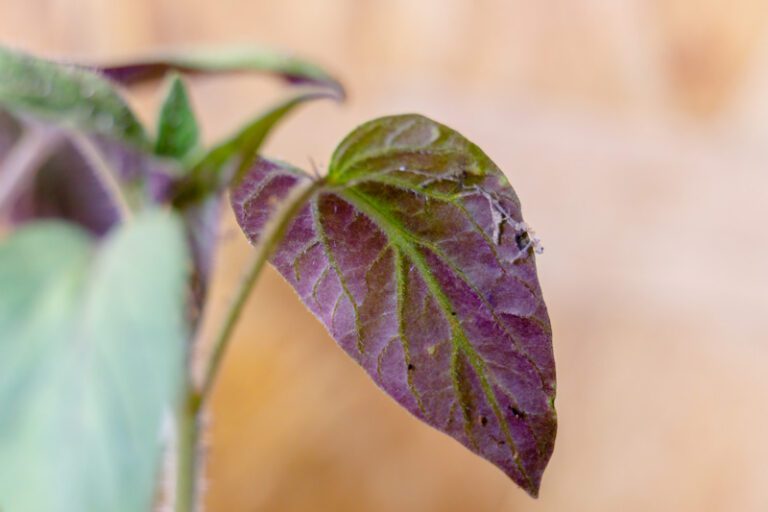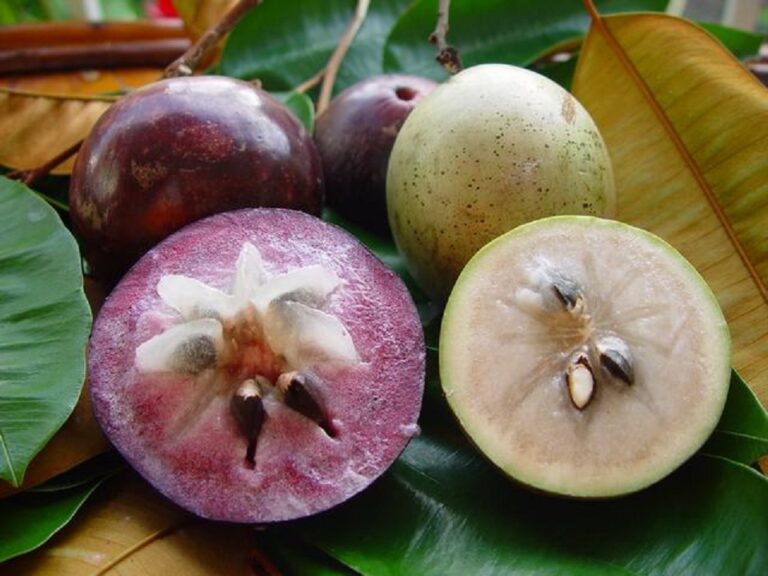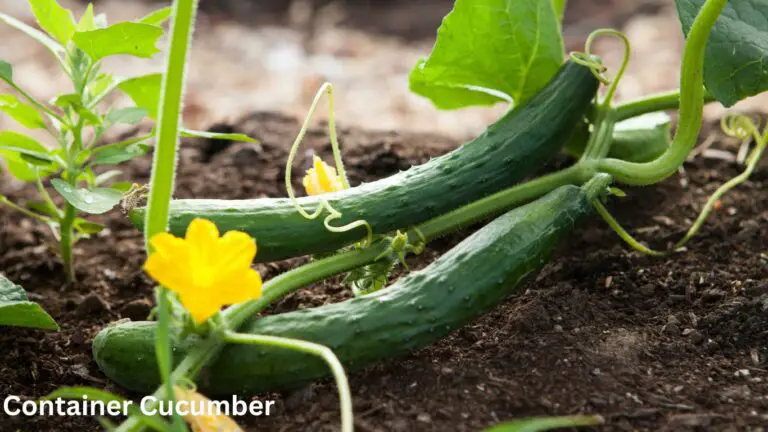How to Treat Tobacco Mosaic Virus: How to Recognize, Control, and Prevent This Disease in Your Plants
Table of Contents
Tobacco Mosaic Virus: Understanding the Disease and Its Effects
Tobacco Mosaic Virus (TMV) is a highly infectious plant pathogen that affects a wide range of plant species, including tobacco, tomatoes, peppers, and cucumbers. This devastating disease is caused by a virus in the tobamovirus group and is characterized by distinctive mosaic-like patterns on the leaves, stunting of the plants, and reduced yield. With its ability to survive in infected plant debris and to be transmitted through direct contact or contaminated tools, TMV poses a significant threat to both commercial farmers and home gardeners alike.
Once a plant becomes infected with TMV, it experiences a range of detrimental effects. The virus interferes with the plant’s ability to photosynthesize efficiently, leading to reduced growth and vigor. This results in stunted plants with distorted leaves that exhibit a characteristic mosaic pattern of light and dark green patches. The severity of the symptoms can vary depending on the plant species and cultivar, as well as environmental conditions. In some cases, TMV can cause a complete loss of crops, leading to substantial economic losses for farmers. Therefore, understanding the disease and its effects is crucial in order to develop effective management strategies to mitigate its impact.

Recognizing the Signs and Symptoms of Tobacco Mosaic Virus
Tobacco mosaic virus (TMV) is a devastating disease that affects various plant species, including tobacco, tomatoes, peppers, and cucumbers. Recognizing the signs and symptoms of TMV is crucial for early detection and effective management of the disease. One of the most distinctive characteristics of TMV-infected plants is the mosaic pattern that appears on their leaves. This pattern consists of light and dark green patches, giving the leaves a mottled appearance. Additionally, the affected leaves may exhibit stunting and distortion, becoming smaller and more brittle than healthy leaves.
Another notable symptom of TMV is the appearance of necrotic lesions on the leaves, which can range in size and shape. These lesions are initially yellowish and eventually turn brown or black, leading to the death of tissue. In some cases, the infected plants may also develop yellowing or chlorosis on the upper leaves, resulting in reduced photosynthetic activity. It is important to note that the severity and combination of symptoms may vary depending on the plant species and strain of TMV involved. Therefore, it is essential to consult with a plant pathologist or horticulturist for accurate diagnosis and proper management strategies.
Understanding the Transmission and Spread of Tobacco Mosaic Virus
The transmission and spread of the Tobacco Mosaic Virus (TMV) is a complex process that occurs through various means. One of the most common ways for TMV to spread is through contact with infected plant material. This can happen when healthy plants come into direct contact with diseased plants, or when tools and equipment used in cultivation are contaminated with the virus. Additionally, the virus can be transmitted by humans who handle infected plants without proper sanitation measures.
Furthermore, insects and other pests can also act as vectors for TMV transmission. Aphids, in particular, are notorious for transmitting this virus from infected plants to healthy ones as they feed on the sap or the leaves. These small insects have specialized mouthparts that allow them to pierce the plant tissues and extract the sap, and in doing so, they inadvertently introduce the virus into the healthy plant.

Understanding the various modes of transmission of the Tobacco Mosaic Virus is crucial in developing effective control strategies. By minimizing direct contact between infected and healthy plants, practicing proper sanitation measures, and implementing pest management techniques, we can significantly reduce the spread of TMV. Additionally, by selecting resistant varieties and planting disease-free seeds, we can further prevent the introduction of this devastating virus into our crops. Staying vigilant and employing integrated pest management practices will go a long way in combating TMV and protecting our plants from its harmful effects.
The Importance of Early Detection and Diagnosis of Tobacco Mosaic Virus
Early detection and diagnosis are crucial for effectively managing and controlling the spread of Tobacco Mosaic Virus (TMV). By identifying the virus at its early stages, gardeners and growers can implement necessary measures to prevent further damage and protect their crops. Early detection allows for prompt actions that can significantly minimize the impact of TMV on both yield and quality.
One of the key reasons why early detection is essential is that TMV is highly contagious and can spread rapidly. The virus can easily be transmitted through direct contact, such as handling infected plants, contaminated tools, or even clothing. It can also be distributed through the air, making it susceptible to long-distance spread. By promptly identifying and diagnosing TMV, gardeners can isolate and remove the infected plants, effectively stopping the virus from spreading to neighboring healthy plants. This not only protects the current crop but also prevents future contamination, as TMV can persist in infected debris and soil for extended periods. Early detection acts as a critical line of defense to reduce the overall impact of the virus and minimize economic losses for growers.
• Early detection allows for prompt actions to prevent further damage and protect crops.
• TMV is highly contagious and can spread rapidly through direct contact or through the air.
• Promptly identifying and diagnosing TMV helps isolate and remove infected plants, stopping the virus from spreading.
• Early detection prevents future contamination as TMV can persist in infected debris and soil for extended periods.
• Early detection acts as a critical line of defense to reduce the overall impact of TMV and minimize economic losses for growers.
Effective Control Measures for Tobacco Mosaic Virus
Tobacco Mosaic Virus (TMV) is a highly destructive plant disease that affects a wide range of crops, particularly tobacco plants. Controlling the spread of TMV is crucial to protect the health and yield of crops. Fortunately, there are several effective control measures available that can help manage this troublesome virus.
One of the most important control measures for TMV is strict sanitation and hygiene practices. This includes thoroughly cleaning and disinfecting all tools, equipment, and surfaces that come into contact with infected plants. Additionally, it is essential to remove and destroy any infected plant material, including leaves, stems, and fruits, to prevent the virus from spreading. Practicing good hygiene and maintaining a clean growing environment greatly reduces the chances of TMV infecting healthy plants.
Another effective control measure for TMV is the use of resistant varieties and healthy seeds. Selecting resistant plant varieties that are less susceptible to TMV can significantly reduce the risk of infection. Additionally, planting seeds obtained from reputable sources that have been tested and certified free of TMV is essential. By utilizing resistant varieties and planting healthy seeds, gardeners can create an environment where TMV has limited opportunities to establish and flourish.

Implementing Integrated Pest Management Techniques to Manage Tobacco Mosaic Virus
Implementing integrated pest management (IPM) techniques is crucial in effectively managing tobacco mosaic virus (TMV) and minimizing its impact on crops. IPM is a sustainable approach that combines various strategies to control pests, including TMV, while minimizing harmful effects on the environment and human health. By incorporating multiple tactics, IPM provides a comprehensive and long-term solution to manage TMV outbreaks.
One of the key components of IPM for TMV management is practicing good sanitation and hygiene. This involves removing and destroying infected plant materials, as TMV can survive on debris for an extended period. Disinfecting tools and equipment used in TMV-infected areas is also essential to prevent the spread of the virus. Additionally, proper sanitation practices in greenhouses, such as cleaning and sterilizing benches, pots, and trays, can significantly reduce TMV incidence.
Furthermore, cultural practices play a vital role in TMV management within an integrated pest management approach. This includes optimizing crop nutrition and providing plants with optimal growing conditions. Maintaining proper irrigation and avoiding water stress can enhance the plant’s resistance to TMV. Additionally, implementing crop rotation strategies and practicing good field management techniques can minimize TMV incidence by interrupting the disease cycle and reducing the buildup of TMV inoculum in the soil.
By integrating these IPM techniques, growers can effectively manage TMV outbreaks and safeguard their crops. However, it is important to note that each situation may require a tailored approach, and regular monitoring and surveillance are crucial to timely identify and address any TMV-related issues. In the next sections, we will explore other control measures and strategies that can further aid in the management of TMV.
| Aspect | Recommendations |
|---|---|
| Crop Rotation | Rotate tobacco crops with non-host plants to disrupt the TMV lifecycle and reduce virus buildup in the soil. |
| Resistant Varieties | Cultivate and use tobacco varieties that are resistant or tolerant to TMV, helping to minimize virus spread. |
| Sanitation Practices | Implement strict sanitation measures to prevent the transmission of TMV through contaminated tools, equipment, or hands. |
| Vector Control | Manage and control insect vectors, such as aphids, through biological control methods, insecticides, or physical barriers. |
| Cultural Practices | Optimize planting density, spacing, and irrigation to promote healthy plant growth and reduce stress that can make plants susceptible. |
| Early Detection and Monitoring | Regularly scout fields for early signs of TMV infection and employ monitoring systems to detect potential outbreaks promptly. |
| Quarantine Measures | Isolate and quarantine infected plants to prevent the spread of TMV within the crop and to neighboring plants. |
| Virus-Free Planting Material | Ensure the use of virus-free planting material to start with healthy crops and reduce the introduction of TMV into the field. |
| Biological Controls | Introduce natural enemies or predators that target TMV vectors or utilize beneficial microorganisms to suppress TMV. |
| Educational Programs | Educate farmers about TMV, its symptoms, and proper IPM practices to enhance their ability to implement effective management strategies. |
Utilizing Resistant Varieties and Planting Healthy Seeds to Prevent Tobacco Mosaic Virus
Utilizing resistant varieties and planting healthy seeds are crucial practices in preventing the occurrence and spread of the tobacco mosaic virus (TMV). Resistant varieties possess genetic traits that enable them to withstand the virus and reduce its impact on the crop. By selecting and using resistant varieties, growers can significantly decrease the chances of their plants becoming infected with TMV.
When choosing resistant varieties, it is essential to consult reliable sources such as agricultural extension services, seed catalogs, and reputable nurseries. These sources provide detailed information about the resistance levels of different varieties to TMV. It is advisable to prioritize certified virus-free seeds to ensure the healthiest start for your plants.
In addition to resistant varieties, planting healthy seeds plays a significant role in preventing TMV. Infected seeds can introduce the virus to your crop right from the start, resulting in widespread contamination. Therefore, it is essential to purchase seeds from reputable suppliers and ensure they have been tested for TMV. Proper handling and storage practices are also crucial to maintain seed health and minimize the risk of virus transmission.
By prioritizing resistant varieties and planting healthy seeds, growers can effectively prevent the occurrence and spread of TMV. These practices provide a solid foundation for crop health and minimize the need for extensive control measures later on. However, it is important to understand that these preventive measures are just one part of a comprehensive approach to TMV management.
The Role of Sanitation and Hygiene in Preventing the Spread of Tobacco Mosaic Virus
Maintaining proper sanitation and hygiene practices is crucial in preventing the spread of tobacco mosaic virus (TMV) in gardening settings. TMV can survive on surfaces like tools, pots, and trays, making it imperative to regularly clean and disinfect these items to minimize the risk of transmission. Additionally, practicing good personal hygiene, such as washing hands thoroughly after handling infected plants or contaminated materials, further reduces the chance of spreading the virus.
Proper disposal of infected plant material is another important aspect of sanitation in TMV prevention. Infected plants should be carefully removed and destroyed, ensuring they do not come into contact with healthy plants or soil. This prevents the virus from spreading through direct contact or airborne particles. Prompt disposal of infected plant debris helps contain the virus and prevents its persistence in the garden.
By maintaining a clean and sanitized gardening environment, enthusiasts can significantly reduce the risk of TMV transmission. Implementing these sanitation and hygiene practices, along with other preventive measures, will contribute to the overall health and success of the garden, safeguarding plants against the detrimental effects of tobacco mosaic virus.
Proper Crop Rotation and Field Management Practices to Reduce Tobacco Mosaic Virus Incidence
Crop rotation and effective field management practices play a crucial role in reducing the incidence of tobacco mosaic virus (TMV) in agricultural environments. Crop rotation involves systematically alternating the cultivation of different plant species in a specific sequence, which helps break the disease cycle and minimize the buildup of TMV in the soil.
By rotating crops, we can disrupt the life cycle of the virus and limit its ability to survive and spread. In particular, avoiding the consecutive planting of susceptible crops such as tobacco, tomato, pepper, and cucumber can be highly beneficial. Instead, incorporating resistant varieties or non-host crops into the rotation can effectively reduce the reservoir of TMV within the field.
In addition to crop rotation, proper field management practices should be implemented to further mitigate TMV incidence. This includes maintaining healthy soil conditions through adequate fertilization and pH management, as well as appropriate irrigation practices to avoid waterlogging. Timely removal and destruction of infected plant materials, weeds, and volunteer plants are also crucial to prevent the survival and spread of TMV. Moreover, practicing good sanitation by regularly cleaning tools, equipment, and greenhouse structures can help eliminate potential sources of TMV contamination.
Overall, incorporating proper crop rotation and field management practices is paramount in reducing the incidence of TMV. By disrupting the virus’s life cycle and maintaining a healthy growing environment, growers can safeguard their crops and ensure sustainable agriculture. However, it is important to note that these practices should be complemented by other control measures to maximize the effectiveness of TMV management strategies.
Managing Vector Insects and Other Pests to Control Tobacco Mosaic Virus
Vector insects and other pests play a critical role in the transmission and spread of the tobacco mosaic virus (TMV). These organisms act as carriers, feeding on infected plants and transferring the virus to healthy ones as they move. To effectively manage TMV, it is essential to implement strategies that target these vectors and pests.
One approach is to utilize insecticides specifically designed to control the vector insects. These products should be carefully selected based on their efficacy and target specificity, ensuring minimal harm to beneficial insects and the environment. Regular monitoring of vector populations is crucial to determine the appropriate timing and frequency of insecticide applications. Additionally, cultural practices like removing weeds and plant debris, which can serve as alternate hosts, can help reduce the population of vector insects and minimize the risk of TMV transmission.
Another method for managing pests is through biological control. This involves the introduction of natural enemies, such as predatory insects or parasitic wasps, to control vector populations. These beneficial organisms can help keep pest populations in check, ultimately reducing the spread of TMV. However, it is essential to assess the compatibility of biological control agents with other pest management strategies and ensure they do not negatively impact other beneficial insects or the overall ecological balance.
By implementing these strategies, gardeners and growers can take proactive measures to manage vector insects and other pests, thereby reducing the transmission and incidence of the tobacco mosaic virus. However, it should be noted that an integrated approach, combining multiple control methods, is often the most effective way to achieve long-term management of TMV and ensure the health and productivity of cultivated plants.
The Role of Cultural Practices in Preventing and Controlling Tobacco Mosaic Virus
Cultural practices play a crucial role in preventing and controlling the spread of the tobacco mosaic virus. By implementing these practices, gardeners and farmers can significantly reduce the risk of infection and protect their crops. One essential cultural practice is practicing strict hygiene measures. This includes regularly disinfecting tools and equipment, as well as keeping the growing area clean and free from any debris or infected plant material. By maintaining a high level of cleanliness, the chances of the virus spreading are minimized.
Another important cultural practice is crop rotation. By rotating crops, gardeners can disrupt the life cycle of the virus and reduce its prevalence in the soil. This involves avoiding planting tobacco or other susceptible plants in the same location year after year. Instead, alternate with unrelated crops to break the virus’s cycle, as the virus cannot survive without a suitable host. Crop rotation also helps improve soil health and fertility, benefiting the overall productivity of the garden or farm.
Utilizing Chemical and Biological Control Methods for Tobacco Mosaic Virus Management
Chemical and biological control methods have proven to be effective in managing Tobacco Mosaic Virus (TMV) and reducing its impact on crops. These methods offer a sustainable approach to disease management, minimizing the use of synthetic chemicals and promoting the natural balance of the ecosystem.
Chemical control measures involve the use of registered pesticides specifically formulated to target TMV. These pesticides can be applied as foliar sprays or incorporated into the soil. Studies have shown that certain fungicides and bactericides can effectively suppress TMV, preventing its spread to healthy plants. It is important to carefully follow the instructions provided by manufacturers to ensure safe and effective use of these pesticides. Additionally, regular monitoring and surveillance of TMV incidence is crucial to detect any signs of resistance development and adjust the chemical control strategies accordingly.
Biological control methods, on the other hand, rely on beneficial organisms to suppress TMV populations. Predatory insects, such as ladybugs and lacewings, can feed on the vectors that transmit TMV, reducing its spread within the crop. Moreover, the use of biopesticides derived from naturally occurring microorganisms, such as Bacillus subtilis or Trichoderma species, can inhibit TMV growth and development. These biopesticides are safe for humans and the environment, making them a viable and sustainable alternative to synthetic chemicals. However, it is important to note that the effectiveness of these biological control methods may vary depending on environmental conditions and the specific crop-pathogen interaction.
In conclusion, the utilization of chemical and biological control methods can play a vital role in managing TMV and protecting crops from its detrimental effects. Combining these approaches with other management strategies, such as crop rotation and cultural practices, can further enhance the overall control of TMV. It is essential for growers to understand the advantages and limitations of each control method and adopt an integrated approach that is tailored to their specific crop and farming system.
Regular Monitoring and Surveillance to Prevent and Manage Tobacco Mosaic Virus
Regular monitoring and surveillance are crucial in preventing and managing Tobacco Mosaic Virus (TMV) outbreaks in plants. By implementing these practices, gardeners and farmers can identify the early signs of infection and take prompt action to prevent further spread.
Monitoring involves visually inspecting plants for symptoms such as mosaic patterns on leaves, stunting, or necrotic lesions. Additionally, it is important to keep a record of any changes observed in plants over time, noting their location, severity, and progression. By regularly surveying the plant population, gardeners can detect TMV at its onset and swiftly implement control measures to minimize its impact.
Surveillance, on the other hand, relies on the use of diagnostic tools to detect TMV accurately. These can include various techniques like enzyme-linked immunosorbent assay (ELISA) or polymerase chain reaction (PCR), which provide specific and sensitive detection of the virus. By employing these methods, gardeners can confirm the presence of TMV even before visible symptoms appear, enabling them to swiftly isolate infected plants and prevent the spread to healthy ones.
In conclusion, regular monitoring and surveillance play a pivotal role in preventing and managing TMV. By conducting visual inspections and utilizing diagnostic tools, gardeners and farmers can swiftly identify infected plants and implement necessary control measures. This proactive approach helps curb the spread of TMV and ensures the health and vitality of plant populations.
What is the best way to prevent the spread of Tobacco Mosaic Virus?
Implementing integrated pest management techniques, utilizing resistant varieties, and practicing proper sanitation and hygiene are effective measures to prevent the spread of Tobacco Mosaic Virus.
How can I recognize the signs and symptoms of Tobacco Mosaic Virus?
Common symptoms of Tobacco Mosaic Virus include mosaic patterns on leaves, yellowing or wilting of plants, stunting of growth, and malformed fruits or vegetables.
What are some cultural practices that can help prevent and control Tobacco Mosaic Virus?
Proper crop rotation, field management practices, and managing vector insects and other pests are important cultural practices in preventing and controlling Tobacco Mosaic Virus.
How does Tobacco Mosaic Virus spread?
Tobacco Mosaic Virus can spread through direct contact with infected plant material, contaminated tools, and through vector insects like aphids and beetles.
What are some effective control measures for managing Tobacco Mosaic Virus?
Regular monitoring and surveillance, utilizing chemical and biological control methods, and implementing integrated pest management techniques are effective control measures for managing Tobacco Mosaic Virus.
Can planting healthy seeds help prevent the occurrence of Tobacco Mosaic Virus?
Yes, planting healthy seeds that are certified disease-free can help prevent the occurrence of Tobacco Mosaic Virus.
Why is early detection and diagnosis of Tobacco Mosaic Virus important?
Early detection and diagnosis of Tobacco Mosaic Virus allows for prompt control measures to be implemented, minimizing the spread of the virus and reducing crop losses.
How can I manage Tobacco Mosaic Virus in my crops?
Regular monitoring and surveillance, implementing proper sanitation and hygiene practices, and utilizing resistant varieties are key components in managing Tobacco Mosaic Virus in crops.
Are there any chemicals or biological control methods that can be used to manage Tobacco Mosaic Virus?
Yes, chemicals such as fungicides and insecticides can be used for control, while biological control methods like the use of beneficial insects can also be effective in managing Tobacco Mosaic Virus.
Why is it important to manage vector insects and other pests in relation to Tobacco Mosaic Virus?
Vector insects like aphids and beetles can transmit Tobacco Mosaic Virus from infected plants to healthy ones. Managing these insects, as well as other pests, can help control the spread of the virus.

Pallavi Gupta is a burgeoning writer at SouthElMonteHydroponics, blending her passion for data analysis with a keen interest in biotechnology. Currently pursuing a Bachelor’s in Biotechnology at Amity University, Pallavi delves into the intricacies of life sciences while gaining hands-on experience in the exciting world of data analysis. Her unique background provides a fresh perspective on hydroponic farming, as she explores the intersection of biotechnology and sustainable agriculture. Through her writing, Pallavi aims to bridge the gap between data-driven insights and innovative farming practices, inspiring others to harness technology for a greener future.






